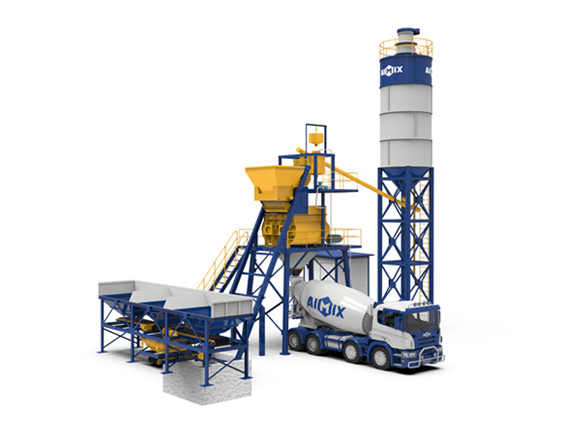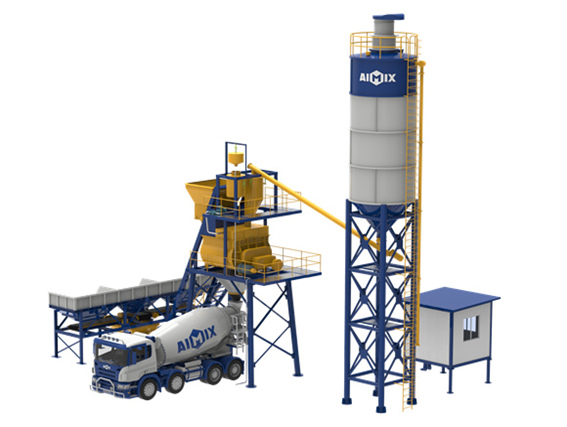A concrete batching plant consists of a series of components and is used to manufacture concrete. The ingredients needed to form high-grade concrete can include water, sand, fly ash, slag, cement powder, silica fume, various aggregates (gravel, river stone, rocks, etc.) air and additives. The main components inside a concrete batch plant are mixers, aggregate batchers, aggregate bins, heaters, cement silos, electronic control units, dust collectors, conveyors, and more.

Mixers
Arguably the most important part of a concrete plant is the mixer. There is a range of different mixer designs in the marketplace, such as single shaft, pan, tilt drum, twin shaft, and planetary. A twin shaft mixer is perfect for creating uniform concrete mixtures as it has a high-powered motor. Meanwhile, a tilt drum mixer is most-suited to manufacturing large batches of concrete formulas. Twin shaft designs are more commonplace in the USA and Canada, while tilt drum designs are more popular in Europe and Asia. Planetary and pan mixers are more commonly used for precast applications.
Concrete Plant Types
Concrete plants can be categorized into various types, including dry mix, wet mix, mobile, and stationary. Mobile concrete batch plants are the most cost-effective types and are ideal for use on temporary construction sites. In contrast, stationary concrete plants are engineered for high-quality, mass-scale production. They are useful for larger projects, such as dam construction, tunnel construction, road and bridge building, port construction, and tower block construction. Energy efficiency and high stability are essential properties of the best stationary concrete plants.

Concrete Plant Applications
Concrete batching plants can be used for precast, civil infrastructure, and ready mix applications. The ready mix concrete market is massive. In fact, it’s forecast to exceed US$624 billion by 2026. RMC plants are subject to higher durability, safety, environmental protection, and reliability standards because they are other located in cities. Concrete truck mixers are used to transport ready mix concrete from concrete batching plants to construction sites across the area.
Concrete Manufacturing Pollution
Manufacturing concrete can produce a lot of waste and dust pollution, which can be damaging to the environment. The pollution is why it’s best not to locate concrete batching plants near residential areas. The good news is that modern batch plants come with the advantage of advanced dust collection systems, which can help to reduce dust pollution significantly. In addition, some newer models are designed to recycle water. So, while concrete manufacturing will never be 100% environmentally friendly, modern equipment and machinery are starting to make the process less damaging.
Concrete Batching Plant Manufacturers
It’s easy to find concrete batching plants for sale online, as there are dozens of manufacturers in the industry. However, it’s important for businesses to ensure they purchase the right plant configuration for the required application. For example, small construction firms are likely to benefit more from mini portable concrete mixing plants, whereas ready mix concrete manufacturing businesses are going to need a large stationary concrete batching plant. The reputation of the manufacturer is also a very important consideration. Click here https://aimix.my/concrete-batching-plant-information/ to learn more about concrete plant information.